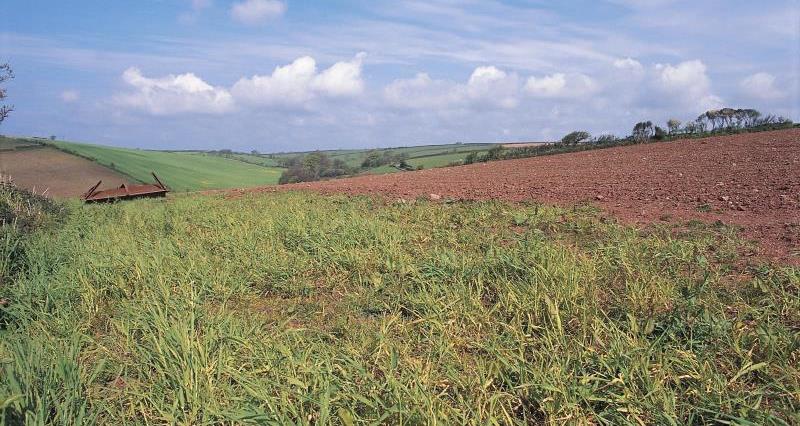What
Uncropped cultivated margins are generally arable field margins that are cultivated annually but not drilled, to support less competitive broad-leaved ‘weeds’ or arable plants, especially the rare species that are now the most threatened group of plants in the UK. This is the most effective measure to conserve these species.
It is vital for the conservation of these species that perennial grass margins are not established on the remaining field margins where they occur. These plants need cultivation and protection from herbicides and fertilisers.
Why
As a group, arable plants include more species threatened with extinction than any other in the UK, with some species now confined to only a few sites.
These rare plants are generally the least competitive weeds in the arable field margins and are not found on nutrient-rich soils where the weed spectrum is dominated by competitive grass weeds and cleavers.
Many rare arable plants are now confined to the edges fields. Careful management of these margins can help them without creating a significant weed burden at the edge of the crop.
Many of these plants also feed a unique array of insects and their seeds are food for declining farmland birds.
How
Choose the best location
- Select areas carefully to ensure they encourage less competitive arable plants and do not become infested with grass weeds.
- Most of the rare and declining arable plants are found on light chalky or sandy soils.
- The best sites are likely to be ones with a long history of arable cropping.
- A survey of the weeds in field margins in June or July may uncover important sites.
Create the cultivated margin
- The area can be cultivated with the rest of the field, to a depth of 6” or 15cm and a fine seed-bed should be created, but then left undrilled and left undisturbed to naturally regenerate.
- If rare species are present, then time the cultivation (spring or autumn) to suit the germination time of the plants.
Management
- Take steps to prevent the drift of pesticides or fertilisers onto the uncropped areas.
- Do not spray the area with pesticides before the arable plants have set seed, and do not apply any fertiliser.
- Annual cultivations are generally needed to prevent the build-up of perennial weeds.
- Sometimes it is necessary to rotate the margins with arable cropping to control the build-up of competitive weeds: once replenished, the seed-bank of the rarer species is long-lived and can withstand many years with conventional cropping before returning to uncropped cultivated margin management.
